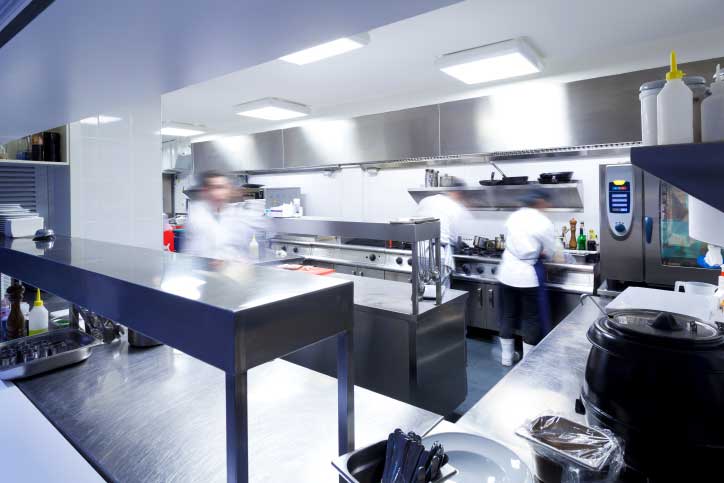
Essential Tips for Planning the Layout of Your Restaurant Kitchen
Your kitchen is the heart of your food establishment. Whether it is a small café, takeaway or large restaurant, every commercial kitchen needs industrial-grade equipment that will endure a busy restaurant schedule. Right from design and layout to kitchen installations, you should plan your kitchen wisely to allow the workflow seamlessly from the prep area to the line. If done well, planning a layout can contribute to the success of your restaurant in the future.
Here’s a list of 5 essential tips which you can use while planning the layout of your commercial kitchen:
1. Check the Ventilation
Proper airflow is necessary for any commercial kitchen. It is also important from the food safety standards point of view. Every Restaurant Kitchen Design includes a structural vent installed in the kitchen for consistent airflow in and out, but keep in mind about where your equipment is placed. Most cooking equipment produces heat, so it is important not to surround them closely with other catering equipment. The equipment might increase the temperatures in your kitchen, so proper and smart ventilation is essential.
2. Know your commercial ovens
Commercial ovens are one of the most expensive pieces of equipment you’ll buy for your kitchen. Keep in mind that a good commercial range can last for years. The type of food on your restaurant menu will decide what type of commercial oven range you’ll require, see our range of ovens: combi ovens, convection ovens & pizza ovens. Consider hoods and fire safety when buying other kitchen equipment like the kitchen stove, oven, and grills.
3. Keep Costs Low in Your Kitchen
A well-planned restaurant not just helps you in keeping the food flowing to the dining room, but also saves you money in time and waste. If your staff knows where the restaurant equipment is placed, this will ease the workflow and help reduce food waste and spoilage. It will also make preparation and cooking time more efficient.
4. Take care of the Hygiene
It’s essential to take care of the hygiene right from the initial stage. Develop a cleaning routine to implement once your shifts begin along with planning dates to work on deep cleans within your restaurant kitchen, which won’t affect your customers or staff.
5. Consider Used or Lease Kitchen Equipment
It’s better to lease or buy second-hand restaurant equipment. For instance, Ice machines are better bought on a lease because they often don’t last more than a few years, and once they breakdown, the repair is quite expensive. Similarly, commercial ovens are ideal to buy used because they can last a long time.
Summing up
Commercial restaurant kitchen layout planning can consume a lot of time, but it can help you run a smooth operation from the very first day. Installing high-performing catering equipment and creating space-efficiency in a sanitary kitchen are some of the important aspects you need to focus while planning your kitchen layout. Maintaining a smooth communication between management and staff can help operations run smoothly both in the kitchen and the dining area.
